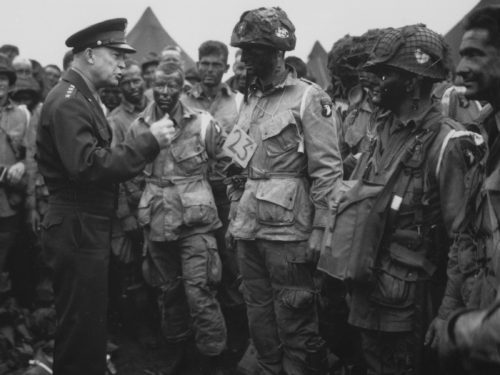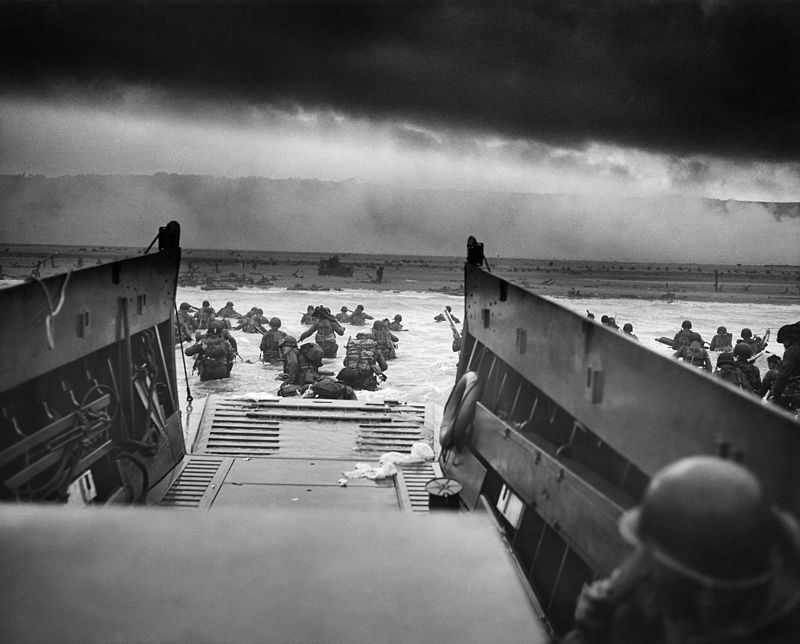History Matters: The Great Crusade and USS Liberty
As of June 4, 1940, the British Expeditionary Force, along with thousands of French and other Allied forces trapped at Dunkirk, were safely back on the shores of England. One-third of a million troops had been saved, but a dozen destroyers and hundreds of small vessels lay at the bottom of the English Channel, while enough vehicles, ammunition, and equipment to outfit nearly ten divisions have fallen into enemy hands.
Why Hitler inexplicably halted his Panzer corps and allowed the Allies to escape remains a source of debate to this day, but nearly two years after the miracle at Dunkirk, the Fuhrer orders the construction of the Atlantic Wall – a massive defensive fortification which ran from France’s border with Spain to the northern tip of Denmark in preparation for the inevitable Allied invasion of Europe.
In early 1944, Field Marshall Erwin Rommel takes charge of the Atlantic Wall. Having witnessed first-hand the strength of Allied air power while in North Africa, and realizing that Germany’s only hope for victory was to stop the Allies on the beach, Rommel beefed up the wall by adding more minefields and gun emplacements. American paratroopers will tell you that where Germany went wrong on the Atlantic Wall was they forgot to put a roof on it.
As the sun sets on airfields across England on June 5, 1944, 13,000 American paratroopers with the 82d and 101st Airborne Divisions (along with nearly 8,000 British and Canadian paratroopers) board the C-47 transports and gliders that will carry them behind Nazi lines on “the Great Crusade.” 1,000 British bombers pound German defenses at the beaches of Normandy while thousands of ships carrying some 130,000 Allied soldiers steam towards France.
After months of planning, Operation OVERLORD is finally underway.

Just after 2 a.m. on D-Day, American paratroopers and glider troops begin landing near Ste. Mere-Eglise and Carentan to clear the way for the march inland. To the east, the British 6th Airborne Division lands near Caen. 2,000 Allied aircraft are now targeting German positions in preparation of the invasion, and are joined at 5:50 a.m. when the guns of the largest armada ever assembled open fire on the Atlantic Wall along the beaches of Normandy.
At 6:30 a.m., American, British, and Canadian troops storm the beaches at Normandy. Losses are heavy for both sides and 4,414 American and Allied soldiers die on June 6. Thanks to an elaborate and wildly successful deception campaign, Germany still expects the main invasion will come at Calais, 200 miles to the east, and fails to send crucial reinforcements to Normandy until it is too late.
The Allies have their beachhead. Nazi Germany is doomed.
On this week in 1967, the Six-Day War between Israel and her Soviet-backed Arab neighbors begins its fourth day of combat. The “technical research ship” USS Liberty (AGTR-5) was slowly steaming back and forth north of the Sinai Peninsula as it gathered electronic intelligence for the National Security Agency. For reasons still unknown 51 years later, unmarked Israeli fighter jets appear and begin strafing the decks of the American-flagged ship, killing and wounding scores of Liberty’s sailors. Those that survive the armor-piercing bullets are targeted by napalm bombs while Israeli torpedo boats blast a gaping hole in the side of the converted World War II freighter and systematically wipe out the life boats with their machine guns.
Upon hearing Liberty’s distress calls, the Navy’s Sixth Fleet scrambles eight planes to rush to the defense of the stricken ship, but President Lyndon Johnson orders them to return to their carriers before they could arrive. Crews frantically work to save the vessel, which was nearly broken in half. 34 sailors are killed and 171 wounded. Liberty‘s skipper Cmdr. William McGonagle receives the Medal of Honor for his actions in an atypical low-key private ceremony at a naval yard. His sailors are issued gag orders – threatened by their own government that if they talk of the incident, they will be thrown in prison, never to be heard from again.
Details surrounding the incident are still a tightly held secret, but Israel immediately apologizes for the incident – citing fog of war – and offers compensation to the sailors’ families.
The Communists must have been paying attention to President Johnson’s lack of a response, because seven months after the Liberty attack, North Korea will attack, board, and seize another spy ship – the USS Pueblo – this time, without any U.S. military response whatsoever.
Just after 2:00 in the morning of June 8, 1995, F-16 Fighting Falcon pilot Capt. Thomas Hansford’s radio cracks to life with the voice of Scott O’Grady, the F-16 pilot shot down by a Bosnian-Serb surface-to-air missile nearly a week ago. The downed airman had spent the last several days evading his would-be captors while searching for a location suitable to land rescue helicopters. Within moments, a 41-man specially trained Marine rescue force from USS Kearsarge boards two CH-53 Super Stallion helicopters and, together with attack helicopters and some 40 other aircraft, chopper their way into Bosnia. On board one of the Super Stallions is the now-deceased Col. Martin R. Berndt, a former platoon commander during the Vietnam War who would not order his Marines to do anything that he wasn’t willing to do himself. (Berndt passed away in 2011 after retiring as a lieutenant general.)
The team punches through heavy fog and lands in a small clearing, where they are greeted by a grateful but exhausted O’Grady, who has to be forcibly disarmed before boarding. The helicopters race back to the amphibious assault ship at treetop level, dodging enemy anti-aircraft fire and missiles along the way, but fortunately, no one is injured in the daring rescue mission.
Twenty-one years later in Iraq, the massive manhunt by special operations hunter-killer teams of Task Force 145 has finally netted Al Qaeda in Iraq leader Abu Musab al-Zarqawi. As the “Sheikh of the Slaughterers” enters a safe house north of Baqubah, Iraq to meet with his fellow jihadists, the military quickly re-routes two nearby Air Force F-16s to the area to bring an end to the terrorist responsible for the brutal deaths of thousands of Iraqis.
The lead F-16 drops two precision-guided 500-lb. bombs, leveling the target. Zarqawi, who had replaced Osama bin Laden and his right-hand man, Ayman al-Zawahiri, as Special Operations Command’s most-wanted man, is finally dead.
